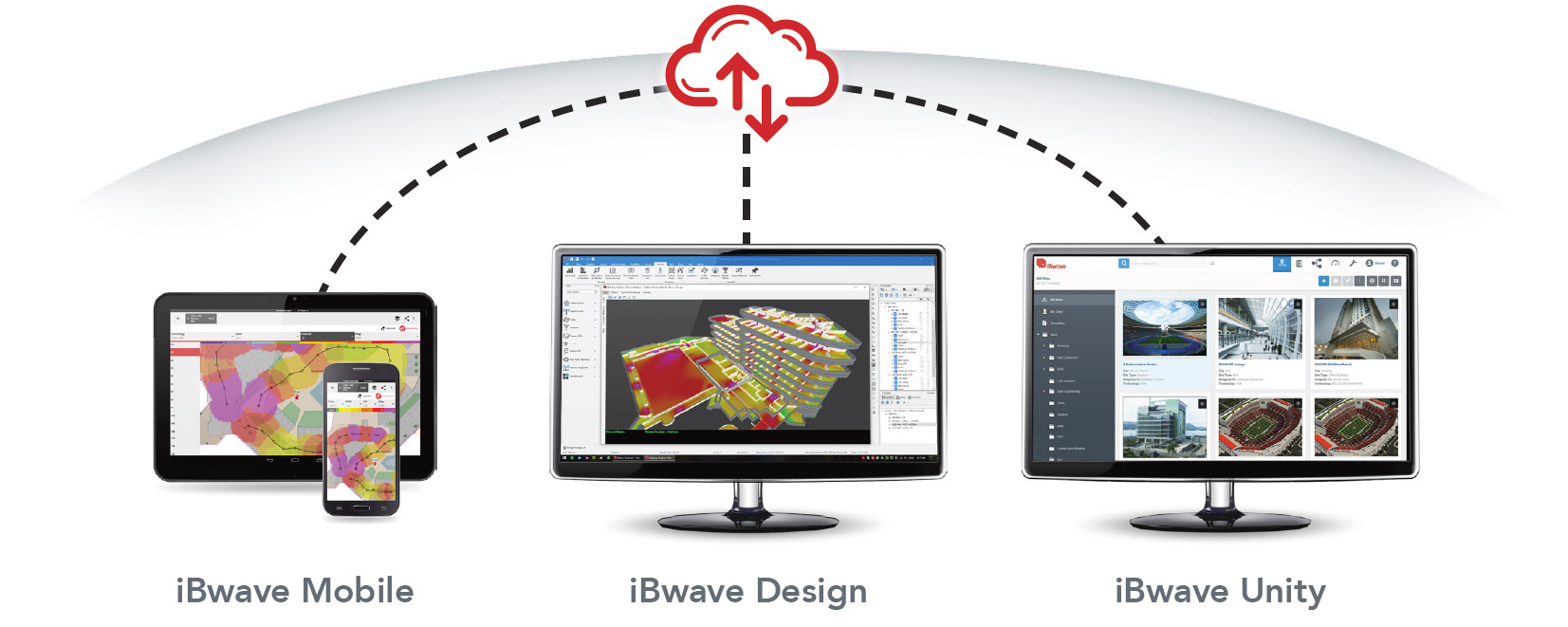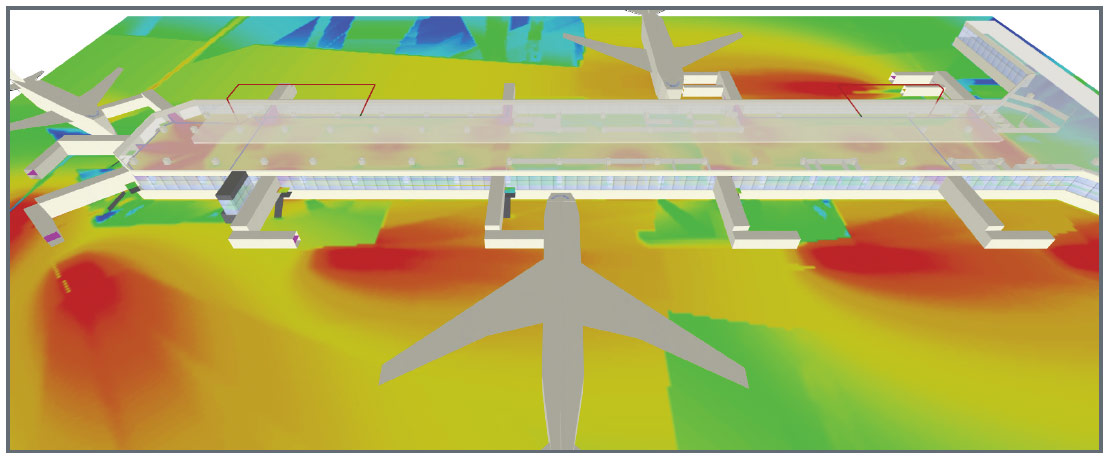Case Study: Reducing Flight Delays by Controlling Airport Wi‑Fi & Cellular Networks Using iBwave
Learn how a major national airline is able gain more control over their cellular and Wi‑Fi networks and reduce time spent on surveys and design which translates into significant cost savings.
INTRODUCTION
We’ve all experienced the frustration of a delayed flight. But did you know that flight delays are just as frustrating for the airlines? Frustrating and costly. Flight delays for any airline have a direct impact on their business – and for one major airline we worked with last year, it was costing them over $700 Million every year. And while many of the factors that make an airline late can be out of their control, there are some that are within.
Mainly, for this airline, their luggage scanners were not performing as they needed to. They could not completely rely on the Wi‑Fi networks because of the large amount of interference, and while the luggage scanners could use the cellular network, the coverage was not great everywhere they needed it (indoor/outdoor) and so they did not have the network performance they needed. The result was millions of dollars in flight delays that needed to be fixed.
But, how to do it? They had control over the Wi‑Fi indoor and outdoor network but faced limitations due to the Airport public and private networks, as well as where they could physically place APs. For the cellular network, it was only providing coverage in public spaces – but not the lower levels where the luggage belts are located. They also faced challenges with the outdoor cellular coverage as large planes were blocking the signal from the cell towers causing the luggage scanners to fail. Working with large carriers to upgrade cellular coverage is often a very long wait and time-consuming. And while they could consider a potential solution like using repeaters, what they really wanted was a way to control all the networks themselves – both Cellular and Wi‑Fi – that their systems relied on.
And that’s where iBwave came in.
THE CHALLENGES
SUPPORT CRITICAL APPLICATIONS ON BOTH Wi‑Fi & CELLULAR NETWORK
Because the luggage scanners relied on both Wi‑Fi and Cellular indoor/outdoor networks, the airline wanted to have better control over the quality of both. They were also in the process of implementing RFID asset tracking and exploring new wireless applications to improve customer service. Problem was, they only had a tool to survey and design the Wi‑Fi network. They needed a tool that could do both.
BASELINE EXISTING NETWORKS
To move forward and troubleshoot existing wireless issues, the company needed a way to establish a baseline for both its Wi‑Fi and Cellular networks together. How could they visualize where the cellular network was failing? How could they see where it was good? Same with Wi‑Fi. To understand how problems could best be fixed, they needed to understand what existed.
BETTER CONTROL AND MANAGE WIRELESS NETWORK LIFECYCLE
The existing wireless network lifecycle – assessment, survey & design – took around 9 weeks plus more time for implementation and validation. Even longer if they had to rely on carriers to assist them in improving the cellular network. They needed a more efficient way to improve both their Wi‑Fi and Cellular networks going forward, that didn’t leave them dependent on any third party.
A CONNECTED SOLUTION
The combination of iBwave Design, iBwave Mobile Planner gave this company the ability to survey and design both cellular and Wi‑Fi networks at the same time. The addition of iBwave Unity into the solution also gave them the ability to centralize all of their site surveys, design and reporting in a single location making it much simpler and more efficient to manage and upgrade networks in the future.

A CONNECTED SOLUTION
Using iBwave, the airline could survey both Wi‑Fi and Cellular networks together to create a baseline understanding of their existing networks. Using the mobile app they could document the site, document both Wi‑Fi and Cellular data measurements and save it into a single project file that would be saved to the cloud for design and documentation purposes. With iBwave Design, they could 3D model the terminals they use at the airports accurately design of both the Wi‑Fi and Cellular network within the same project file. Using iBwave saved them significant time and money because they no longer had to rely on thirdparty or the carrier to survey and design the cellular piece of the network. With control of both networks, they had confidence they could deploy a reliable network to support their critical applications.
They also now had the right as-built documentation to save in a centralized location in iBwave Unity to easily be accessed in the future for maintenance and upgrade projects. This eliminated weeks of time off their existing process as it completely removed the need to continuously do surveys each time they wanted to assess and upgrade the network.
Overall, by using iBwave the airline could reduce their usual 6 week assess, survey and design time to just 4 days. Translated into overall cost savings, the estimated potential to savings to the airline would be millions of dollars.
DIMENSION & PLAN

iBwave Mobile
Site surveys
- Digitize notes, pictures & drawings into .ibw file
- Integrate RF data collection into .ibw file
- Single project file
ASSESS
3-5 DAYS
2 HOURS with iBwave
SURVEY
2 WEEKS
3 DAYS with iBwave
ANALYSE & DESIGN
3 WEEKS
8 HOURS with iBwave
To learn more about how iBwave Design can help design networks for a variety of use-cases, visit our product page on www.ibwave.com.


